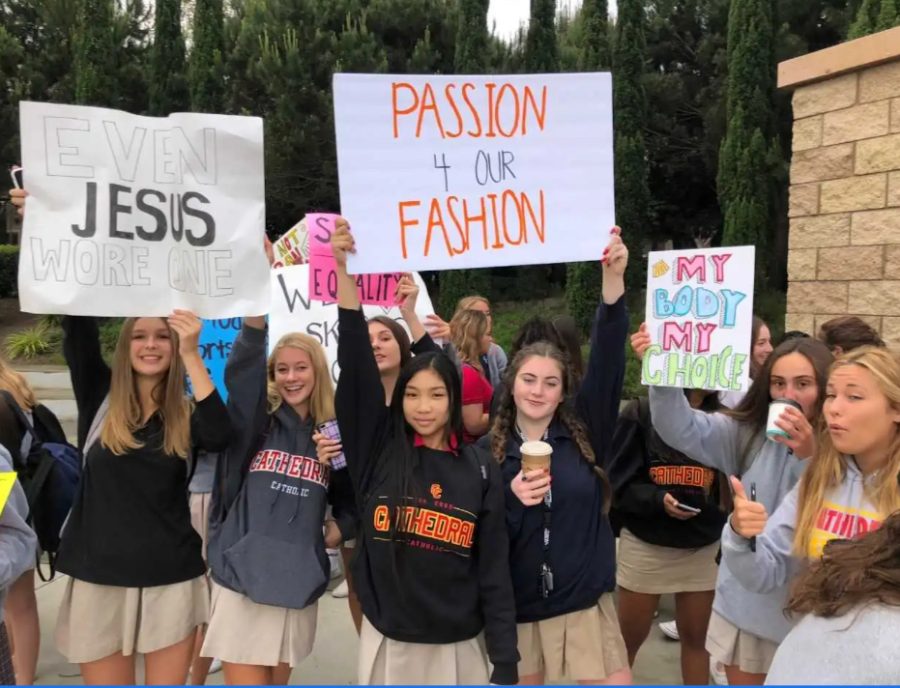The Dress Code Crisis
CCHS students, now graduated, unite to defend their dress code from shifting to pants May of 2019.
Controversy with dress code regulations between administration and students is on the rise – sparked by the mandatory dress code evaluations on Tuesday, March 8. This illuminated a greater issue: Was the ban of skirts in 2019 effective in decreasing dress code violations? A consensus across campus is clear: no. Let’s investigate why.
It is evident that the dress code became increasingly relaxed this year; despite the efforts made by forcing girls to wear pants. The freedom of choosing one’s own wardrobe was enticing at first, however this freedom proved to be unclear and, as a result, abused. The rules enforced from the handbook are selective, varying from teacher to teacher. This makes students both confused and unnecessarily criminalized by their teachers.
The ban of skirts proved to be counterintuitive because it failed to solve the school wide dress code crisis. In fact, it made it worse. Students collectively push their boundaries, wearing yoga pants and growing mullets far longer than their collars. Tuesday, prompted by an announcement from Mr. Wallace, many classes dismissed nearly half of their attendees to the office on account of ‘dress code violations’. Female students arrived to find a selection of pants, the majority of which were designed for males. This is not only non-inclusive of various body types, as students were forced to wear pants that were severely too large or too tight, but also caused them to miss a portion of their class. This indicates to both students and teachers that the students’ education is not the priority. It can be argued that these strict rules are necessary means for uniformity on campus. However, girls strolling to class with their pants cinched to their waist with rubber bands (because their pants are hysterically large) does not strike me as a prudent solution.
Should Cathedral Catholic return to school mandated apparel – making students wear the same style and brand of pants? It appears this could be an effective solution. However, after the uprise caused by the skirt ban, it is clear this will brew chaos within the community. One can list innumerous solutions to the students’ failure to adhere to dress code; but true progress will be made when administration understands that, perhaps, this “problem” does not need fixing. How do yoga pants interfere with the learning process? Attempting to authorize an outdated dress code creates more problems than it solves. Reforming CCHS’s handbook to broaden the restrictions on pants would benefit both students, who would remain comfortable and expressive, and teachers, who would have fewer students leaving their class for dress code violations.
Why are female pants villainized and not the male equivalents? Mullets and athletic shorts far above the knee, as regulated in the student hand book, parade around campus without a demeaning glare. If the administration is going to crack down on the dress code, they would benefit from addressing all of its flaws. To avoid this would create tension between genders and confusion among students, who will fail to honor a system that is tarnished by inequalities.
Students deserve clarity in their dress code. When the majority of students on campus are out of dress code and few teachers enforce the rules, those targeted are bound to feel as though they have been served an injustice. Perhaps I may be biased, but as a student, I feel that a relaxed dress code is preferable to an unjust one. If the administration fails to find balance, Cathedral Catholic will acquire a reputation of disorganization and sexism.

Sarah Brown. Cheerleader, journalist, and vegan. Sarah has three siblings, all in college and her sister attends Colorado State University. She failed...





















































